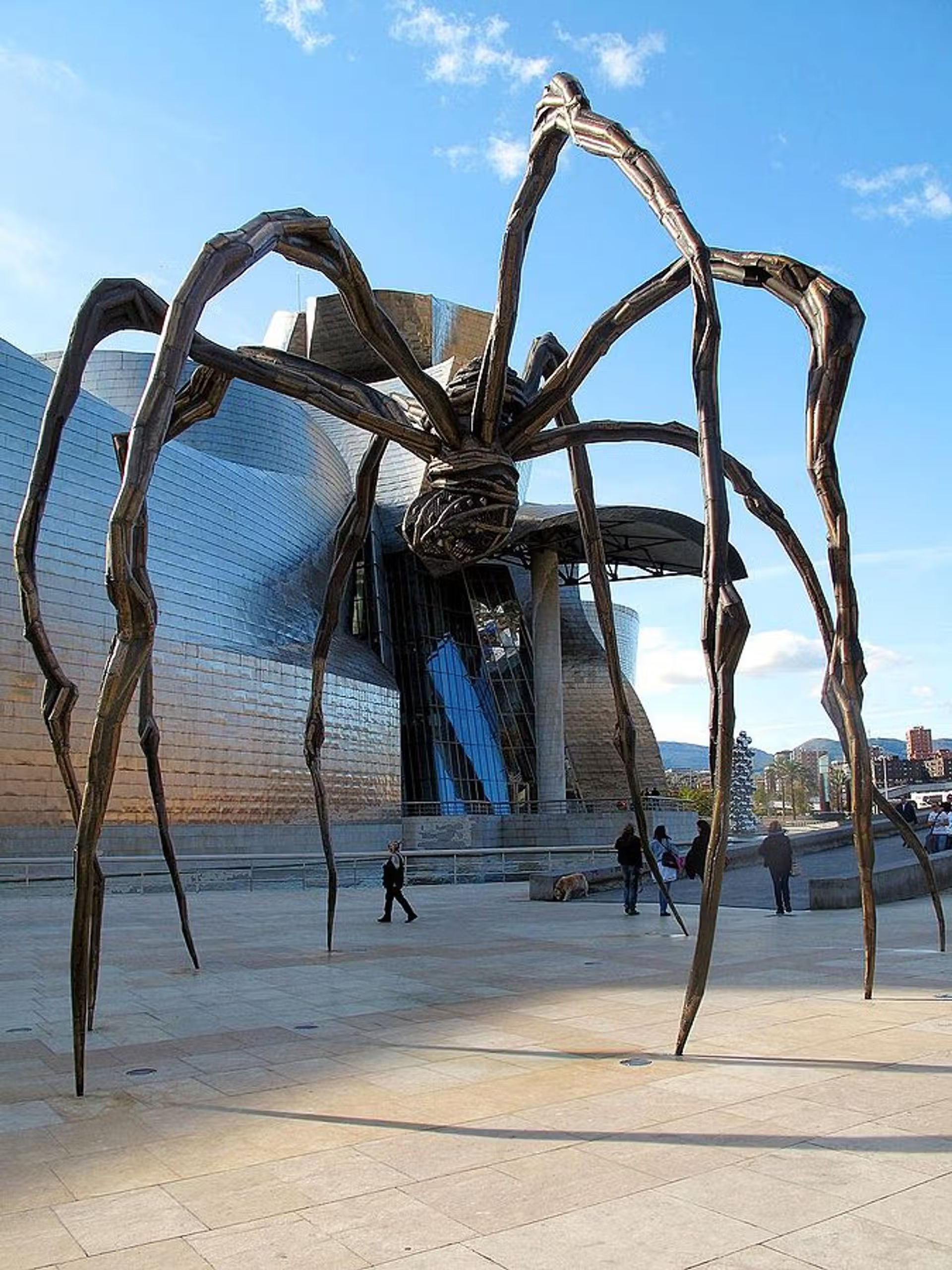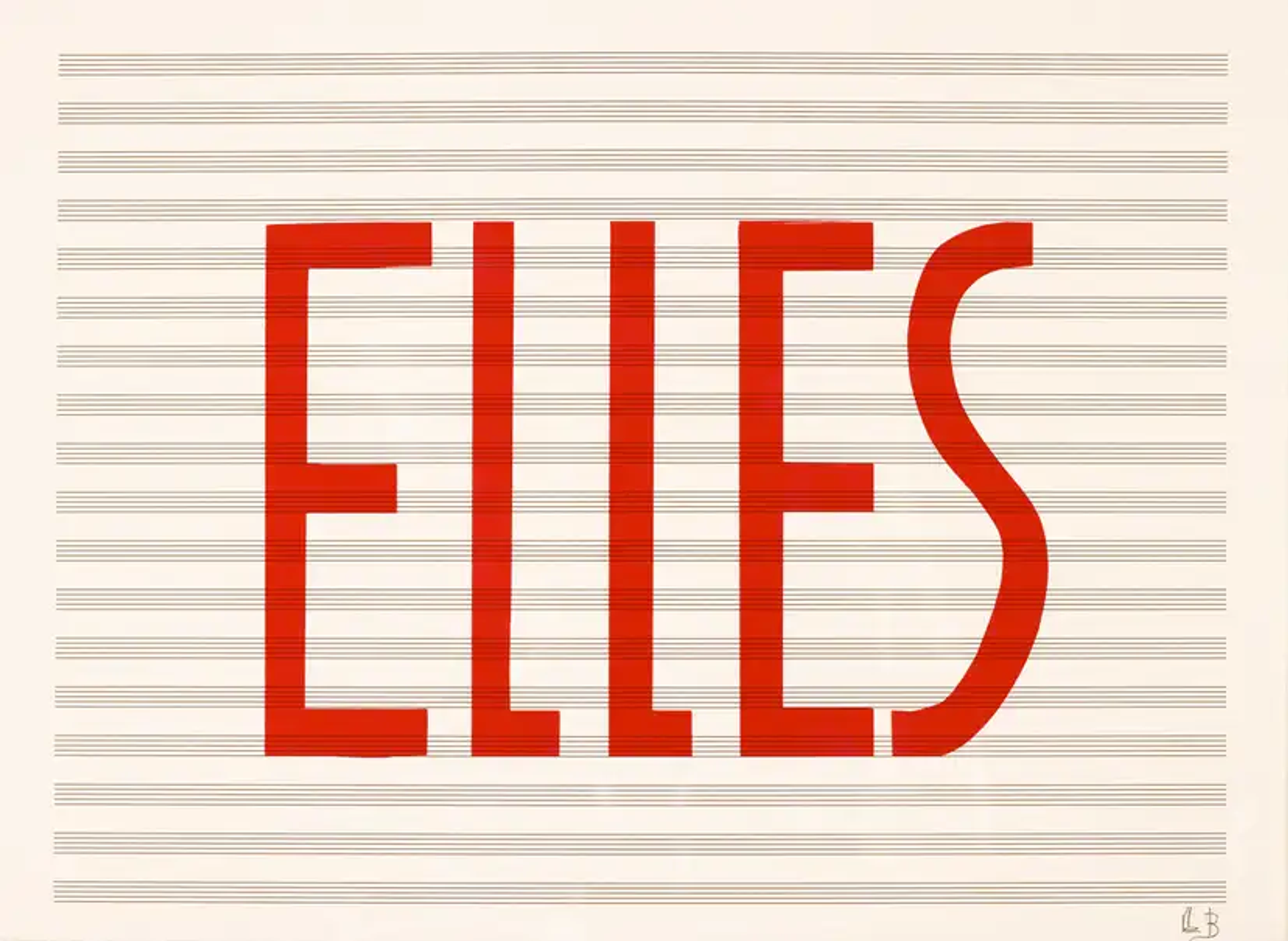 Untitled #16 © Louise Bourgeois 2005
Untitled #16 © Louise Bourgeois 2005
Louise Bourgeois
104 works
Born in Paris in 1911, Louise Bourgeois was an artist whose mastery over a range of techniques and materials allowed her to express complex psychological landscapes. Her sculptures, installations, and drawings often reflect on her own experiences, exploring issues of femininity, family, and fear. Bourgeois' art is not just seen; it is felt, offering a visceral experience that invites viewers into her deeply personal world. Her innovative use of materials such as fabric, rubber, wood, and metal in combination with her unique techniques has cemented her position as a pivotal figure in contemporary art.
The Artistic Evolution of Louise Bourgeois
Bourgeois' journey into contemporary art began in the early 20th century Paris, where she was born into a family immersed in the restoration of tapestries. This early exposure to the art of weaving and repair instilled in Bourgeois a profound appreciation for the tactile and the ephemeral, elements that would later define her multifaceted body of work. The act of mending, a task imbued with both care and creativity, emerged as a thematic undercurrent throughout her career, symbolising healing and reconstruction amidst emotional turmoil.
Bourgeois' education in art began in earnest in Paris, where she studied at the Ecole des Beaux-Arts and in the studios of artists like Fernand Léger. Initially, her focus was on painting and printmaking, mediums through which she explored abstract and figurative forms. However, the tactile nature of her early life experiences beckoned, leading her to experiment with more diverse materials.
The transition from painting to sculpture marked a pivotal phase in Bourgeois' evolution. Sculpture allowed her a three-dimensional plane to explore her innermost feelings and memories, a practice that became central to her work. Her sculptures, often created from wood, metal, and later, soft materials like fabric, transcended traditional forms and materials. They were deeply personal yet universally resonant, rooted in her experiences yet speaking to the collective unconscious.
Bourgeois' early sculptures were influenced by the post-war European artistic movement, which was steeped in existentialism and a fascination with the human condition. However, her approach was distinct. She wove her personal history – her anxieties, her familial relationships, and her struggles with identity – into her work, making the private public and the personal universal.
As Bourgeois moved further away from painting, she leaned into sculpture, her chosen materials and techniques becoming ever more integral to the narrative power of her art. This transition laid the groundwork for a career that would continue to challenge and redefine the boundaries of contemporary art.
Bourgeois’ Exploration of Materials
Fabric
Bourgeois' use of fabric in her installations carries a profound emotional weight, rooted in her childhood memories of working in her family's restoration workshop. Textiles became a medium through which she explored themes of repair, memory, and the maternal. Her installations, such as the Cells series, often incorporated fabric, ranging from delicate garments to robust tapestries, to create intimate spaces that evoke feelings of comfort and confinement, protection and vulnerability. Fabric, with its inherent warmth and tactile nature, allowed Bourgeois to weave personal histories into her art, making the viewers feel enveloped in her emotional landscape.
Metal
Metal, in contrast, offered Bourgeois a means to explore the dualities of strength and fragility, permanence and impermanence. Her towering sculpture Maman, a giant spider crafted from steel, embodies this contradiction. The spider, a figure that recurred throughout her oeuvre, symbolises the artist's mother – protective, nurturing, yet formidable. Through the use of metal, Bourgeois was able to convey the spider's imposing presence and resilience, while the delicate, thread-like quality of its legs suggested vulnerability. This interplay of strength and fragility speaks to the complexity of human relationships and the interwoven nature of care and fear.
Rubber, Wood, and Stone
The incorporation of rubber, wood, and stone into Bourgeois' work further illustrates her deep engagement with themes of memory and nature. These materials, each with their own texture and historical connotations, enabled Bourgeois to connect with the past and the elemental forces of nature. Wood and stone, often carved or assembled into enigmatic forms, evoke a sense of timelessness and the cyclical nature of life. Rubber, malleable and resistant, was used to create sculptures that appear both organic and surreal, highlighting the elasticity of memory and its resistance to decay.
Plaster and Latex
Plaster and latex are materials that Bourgeois used to great effect in crafting organic shapes that blur the lines between body and landscape, reality and dream. These materials, capable of capturing the finest details, allowed Bourgeois to create works that are at once visceral and ethereal. The soft, skin-like quality of latex and the smooth, ghostly surfaces of plaster sculptures evoke the fragility of the human body and the fluidity of psychological states. Through these materials, Bourgeois explored themes of birth, growth, and transformation, inviting viewers to ponder the porous boundaries between the self and the other, the internal and the external.
Bourgeois’ Thematic Exploration through Techniques
Bourgeois' oeuvre is an exploration of the human psyche, employing a diverse range of materials and techniques to delve into themes central to the human experience: the body and femininity, family and memory, fear and isolation. Her artistic language, both subtle and visceral, articulates these themes in ways that resonate deeply with viewers, inviting them into a reflective engagement with the work.
The Body and Femininity
Bourgeois' exploration of the body and femininity is rooted in a deep engagement with materials and forms that evoke the tactile and sensual qualities of flesh and fabric. Her sculptures, often organic and undulating, suggest the contours of the human body, drawing viewers into a conversation about sexuality, femininity, and the complex relationships between body and identity. For example, her series of soft sculptures, crafted from textiles and latex, utilise the technique of sewing to piece together fragments of fabric, symbolising the reconstruction of identity and the healing of psychological wounds. These works, with their explicit references to female anatomy, challenge traditional representations of the female body, offering a nuanced exploration of femininity and power.
Family and Memory
Bourgeois' use of domestic materials and personal motifs is a poignant exploration of her childhood and family dynamics. Objects such as chairs, spools of thread, and fragments of clothing become laden with memory, evoking the domestic sphere of her upbringing. Through techniques like assemblage and installation, Bourgeois creates environments that are deeply personal yet universally accessible, reflecting on themes of belonging, loss, and the passage of time. Her Cells series, for example, encapsulates these themes, using enclosures constructed from old doors, mirrors, and wire to house an array of personal objects, each telling a story of familial relationships, memory, and the search for self.
Fear and Isolation
The emotions of fear and isolation permeate much of Bourgeois' work, expressed through techniques that create tension and unease. Her use of materials such as rubber, glass, and steel, often in configurations that suggest entrapment or vulnerability, evokes a visceral response. The spatial arrangement of her installations often requires viewers to navigate through confined or labyrinthine spaces, mirroring the psychological states of fear and isolation. Bourgeois' Spider sculptures, with their looming, protective presence, simultaneously invoke fear and the desire for shelter, reflecting the artist's complex relationship with her mother and her own experiences of loneliness and emotional turmoil.
Through her masterful use of materials and techniques, Bourgeois constructs her own tapestry of themes that are at once deeply personal and universally resonant. Her work invites a contemplative engagement, challenging viewers to confront their own vulnerabilities and histories. Bourgeois' artistic practice is not just an exploration of themes such as the body, family, and fear; it is a profound inquiry into the nature of human existence, marked by a relentless pursuit of emotional truth.
Louise Bourgeois: A Vanguard of Innovation and Influence
Bourgeois stands as a monumental figure in the art world, not only for her distinctive thematic exploration but also for her pioneering use of materials and techniques. Her profound influence on contemporary art extends far beyond her own extensive body of work, inspiring generations of artists to push the boundaries of their creative expression. Bourgeois’ innovative approach to sculpture, installation, and assemblage has positioned her as a key forerunner in feminist art, offering new ways to explore and express ideas about the body, gender, and the psychological underpinnings of human experience.
Bourgeois' fearless experimentation with diverse materials, from fabric and latex to metal and wood, coupled with her deeply personal iconography, has opened up new avenues for artists to explore complex emotional and societal themes. Her ability to imbue materials with significant emotional weight has challenged and expanded the parameters of how art can communicate, breaking ground for artists interested in exploring the intersections of identity, memory, and trauma.
Through her exploration of themes such as femininity, domesticity, and the body, Bourgeois provided a visual language that articulated women’s experiences, setting the stage for future generations of artists to delve into these subjects with honesty and depth. Her work has been instrumental in elevating the discourse around feminist issues within the art world, making visible the often-overlooked stories and inner lives of women.
Reflecting on Bourgeois' legacy, it becomes clear that her techniques and material choices are central to the power and resonance of her work. Her artistic practice invites us to see beyond the surface, encouraging a deeper engagement with the emotional and conceptual layers of art. As we consider the breadth of Bourgeois’ impact, we are reminded of the transformative potential of art to explore, express, and evoke. Her work serves as a beacon for artists and viewers alike, urging us to approach art with curiosity, empathy, and a willingness to confront the complexities of the human condition.













